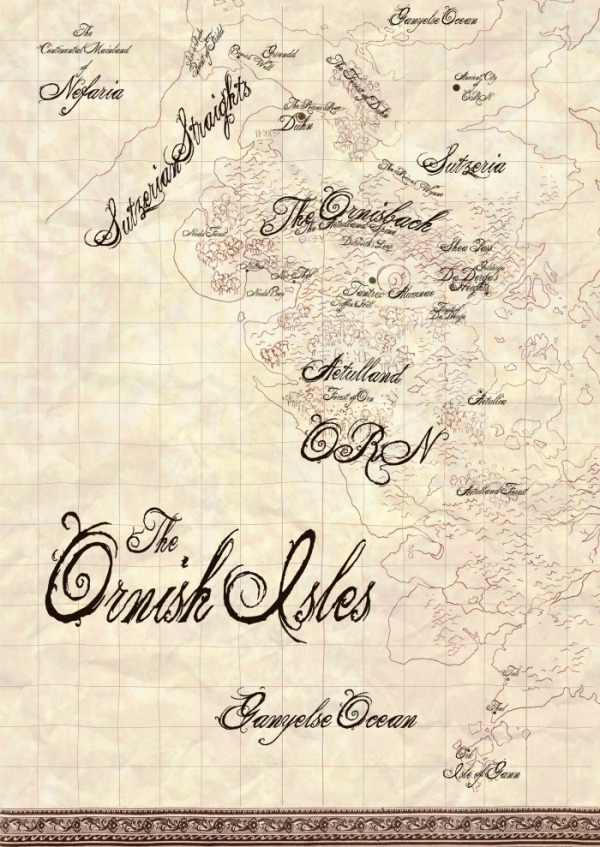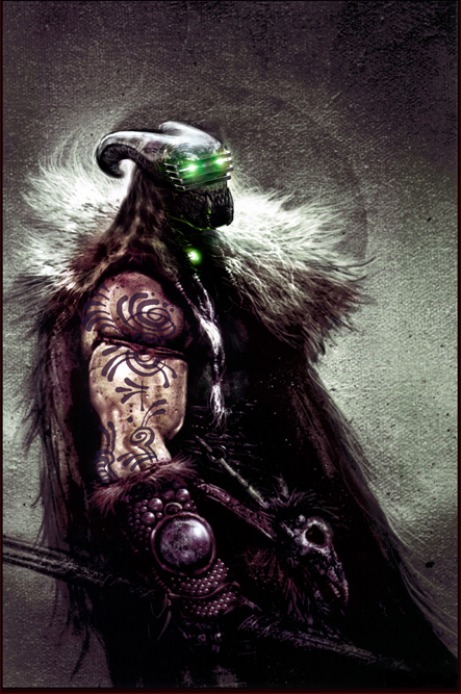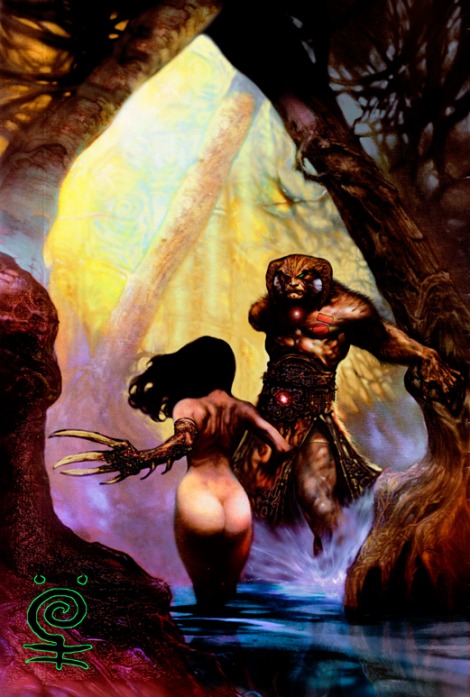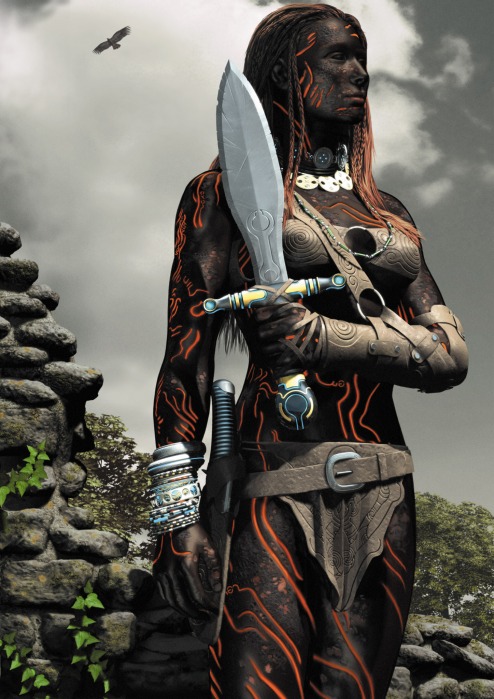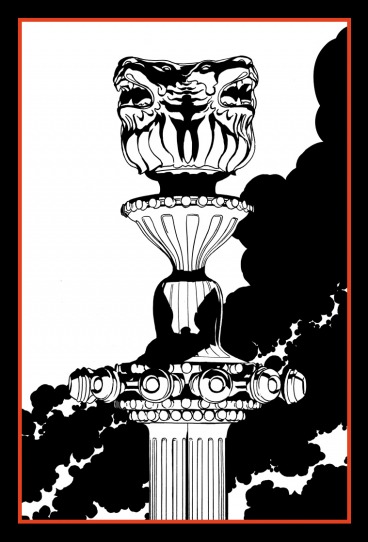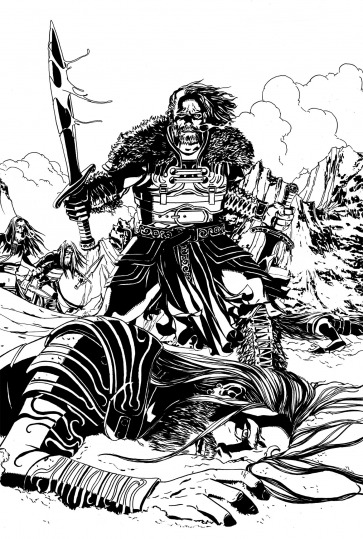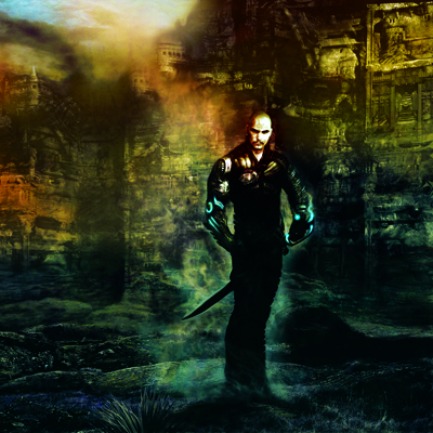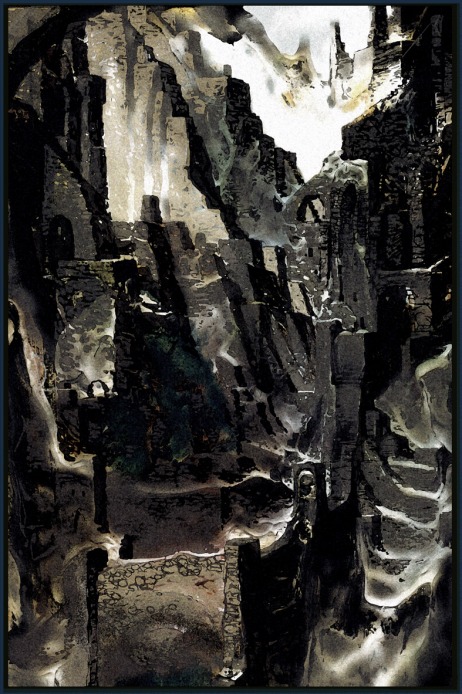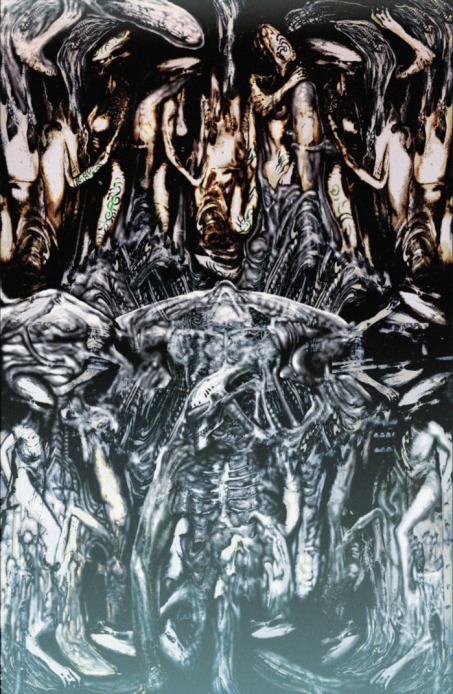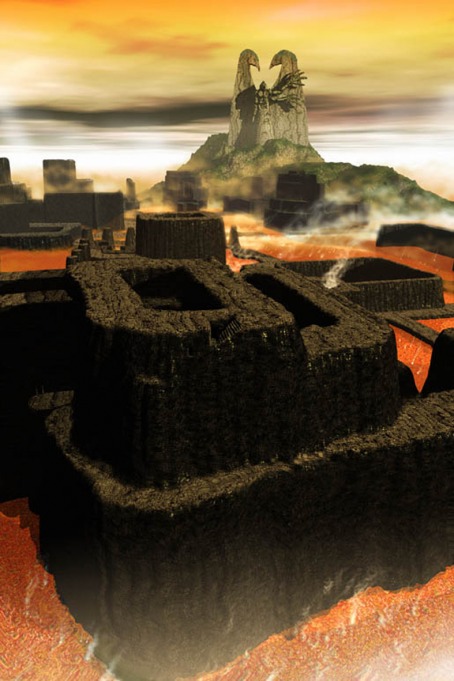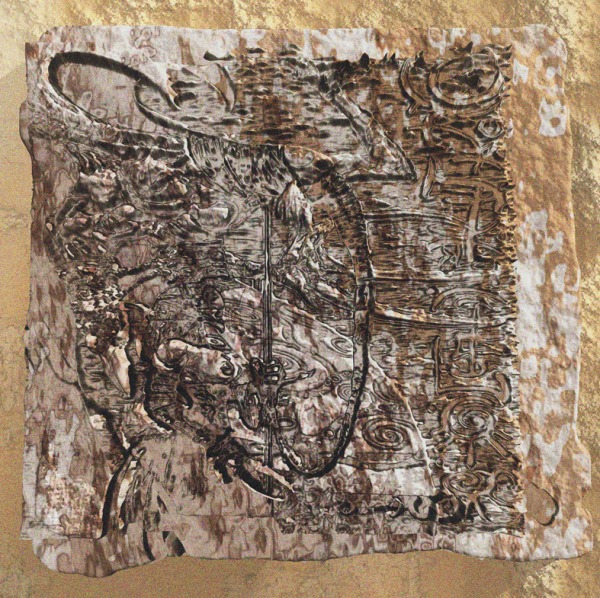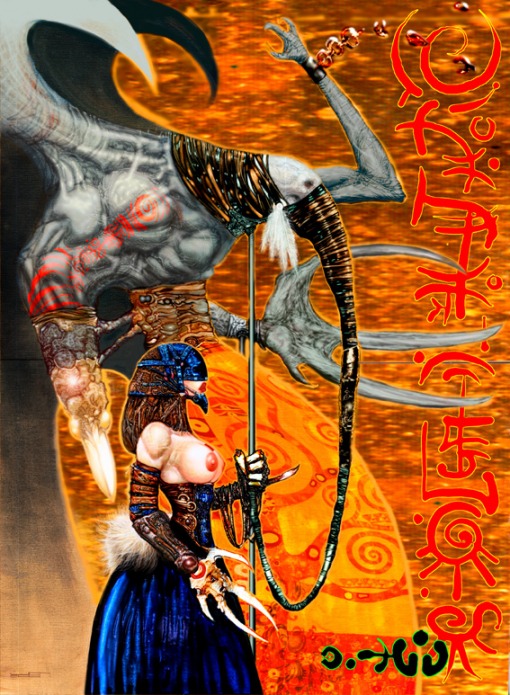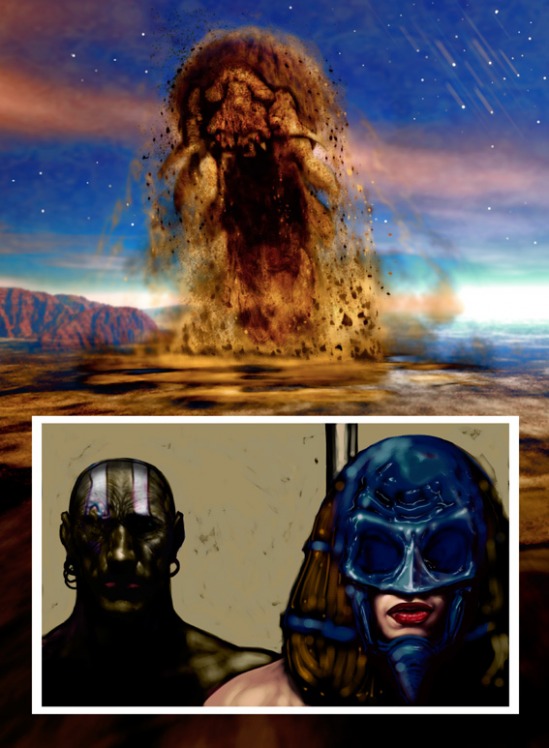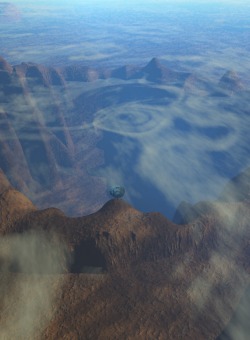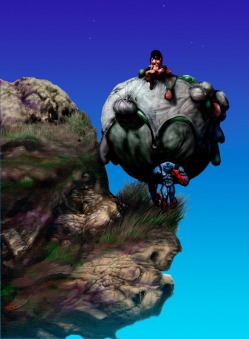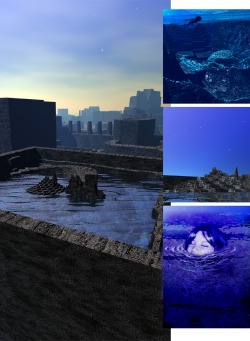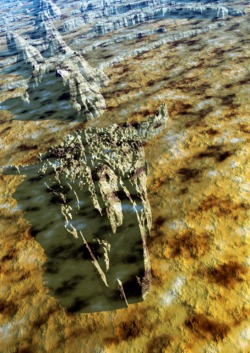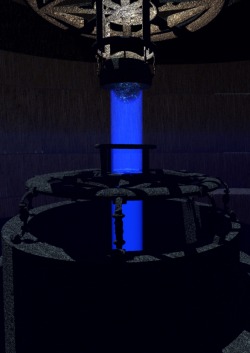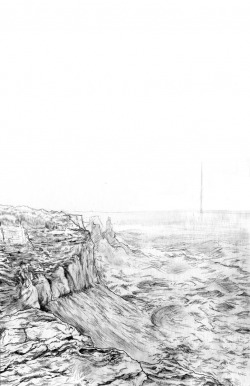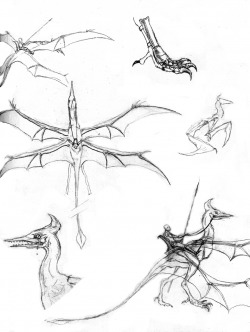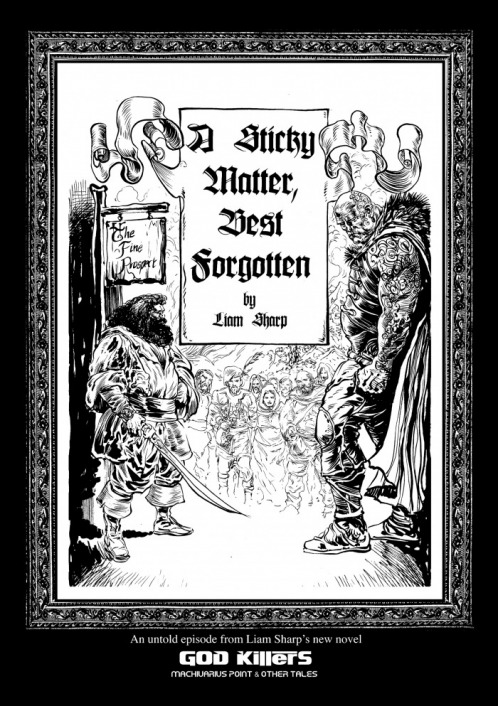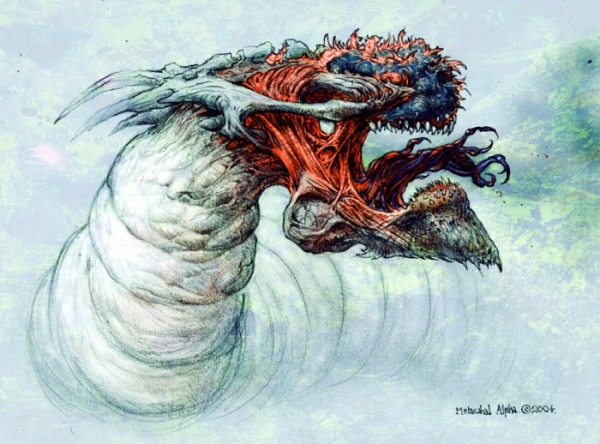Online gallery
The worlds of Althlathu and Arddn as visualised by the author and others
First edition cover
Second edition cover
Map of the Ornish Isles
Please note that all the illustrations featured below are web-based only and do not appear in this edition of the novel.
Thrall Brookbane at Machivarius Point in Duhn by Liam Sharp
Sayer! by Liam Sharp
Cherry Longorn by Edmund Bagwell
The Machivaria of Duhn by Edmund Bagwell
Woebeg ban Errieu and the Nefars by Edmund Bagwell
Lordt Hergal Ban Egan outside the gates of Tantrix-Alumnae by Liam Sharp
Da Derga's Heights by Liam Sharp
Vile-Space by Liam Sharp
The Destruction of Neptek by Liam Sharp
All the pieces featured below are by Liam Sharp, and illustrate the section of the book called Kiazmus.
KIAZMUS
Foreword by Dr. Frank Scopegate.
Tangiers. 1978.
Whilst it can hardly be doubted that the text translated in this book is of an Earthly origin, much of it can only be explained by visual placement within the context of the Universe at large. Obviously this represents some major problems for orthodox archaeology. The apparent age of the Kiazmus tablets recently unearthed near a Berber settlement in the Moroccan desert, some two and a half to three thousand years, suggests that the composer could not have had any true understanding of the greater nature of the physical universe. He would have had no concept of planets, stars, worm-holes or genetics that the text implies. Yet attempts to translate the prose as metaphor have, for the most part, yielded unfathomable results. For the purposes of this translation I have chosen to interpret as literally as is possible, and so while it may be rooted in mere analogy, I choose to read it as fact. Where the text implies “planet”, I have written planet. Where it appears to be describing voyages that span the universe, then that is what I have interpreted it as meaning. When it apparently speaks of extra-terrestrial races, that’s how I have referred to them.
In essence I have intentionally placed myself outside of orthodox study, and attempted to present the most literal translation of the Kiazmus text to date. In this abridged version I have striven to provide a more consistent narrative and have chosen to omit the Book of the First Cycle of Relevance through Rational Rememberance and Reason, starting instead with the first chapter of the second book from which the text takes it’s name; Kiazmus. Much of the first book describes what appear to be the belief systems, legends, demographics, flora and fauna of the desiccated “planet” Althlathu, the setting of this epic. The second book, Kiazmus, stands as a bolder, more narrative work, the controversial nature of which has led it to be much overlooked by academics as a work of fancy, with little or no relevance to either history or archaeology. There is little indeed to tie it to what we know of our world today, but it stands at the very least as a great work of the imagination in the truest tradition of the Epic poem. From Gilgamesh, through the Odyssey, to Beowulf. And perhaps most startling of all is that it’s primary protagonist is female, while her familiar is not of any race we know of today, or have encountered in other primitive mythologies currently studied.
The Kiazmus tablets stand unique as a vast work that draws no parallel with any period of civilisation known to man. It is as elusive as alluring. It defies categorisation and leaves us reeling at its implications.
Where possible I have included information from other tablet segments that apparently relate to the saga depicted upon the main Kia tablet, and deepen our perception of the mythology - or as I’m fancifully suggesting, the flora, fauna and legend of this incredible alien landscape so richly and vividly depicted by a hitherto undiscovered civilization so very long ago.
One of the Kiazmus tablets unearthed near a Berber settlement in the Moroccan desert in 1978.
"Dust Bowl" illustrations by Robert Randle
Metawhal Alpha by Liam Sharp
A Sticky Matter, Best Forgotten.
Cover to the chapbook used to launch GOD KILLERS at Eastercon. The short story is now included in the second edition.


